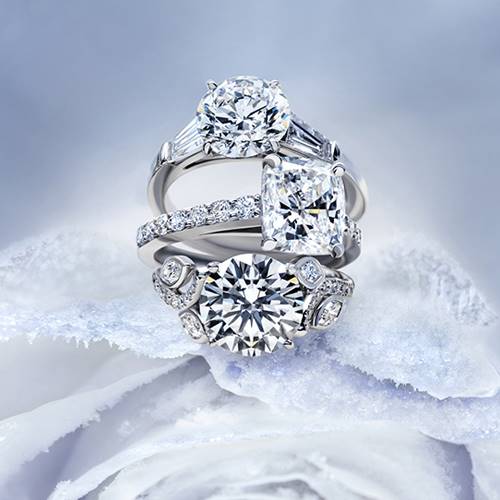|
News
Articles from DIAMOND JEWELLERY (1064 Articles)

The diamond industry could benefit from more branding. Image courtesy of De Beers
Call for more diamond brands to increase demand
 2.2 k views | Posted June 17, 2014 2.2 k views | Posted June 17, 2014 | By Stephanie Chan • Staff Journalist
De Beers Group has highlighted branding and advertising as two areas
that the diamond industry needs to take advantage of while demand is
strong.
The group’s CEO, Philippe Mellier, said that although diamonds inherently hold emotional appeal, the industry was yet to fully capitalise on the power of branding.
“We have not yet seen the benefit of brand competition that has elevated the performance of other industries,” he stated in his address at the JCK Las Vegas jewellery show, held from 30 May to 2 June this year.
Mellier used the competition between Apple and Samsung in the technology arena and Gucci and LVMH in high-end fashion as examples, stating that these rivalries had “captured the attention of a public hungry for deeper meaning when spending their disposable income”.
He believed that branding represented a “huge opportunity” for the growth of the diamond industry. “An increase in the number of emotionally significant branded products in the diamond retail sector has the potential to provide the oxygen for a new age of prosperity and growth in the industry, in the same way that clothes, accessories and fragrances have experienced flourishing demand as a result of brand competition,” he said.
Further to this, Mellier stated that the diamond industry needed to invest more in advertising and the consumer experience, and that now was the best time to do so due to current strong global demand.
“Last year, demand for diamond jewellery rose seven per cent in the United States, the largest market, and by 18 per cent in China, the fastest growing market,” he said.
Mellier added that major analysts had predicted that positive economic conditions in the US and emerging markets such as China would lead to continued strong diamond jewellery demand in the coming years.
“Goldman Sachs expects [these conditions] to generate an average increase in demand of 11 per cent each year from 2013 to 2017,” he said.
“We must address existing and emerging challenges to consumer confidence. We must ensure that supply effectively meets the growth in demand. And we must continue to engage new geographies and new generations of consumers with the diamond dream. That involves understanding them better, coming up with new ways to meet their needs and ensuring a sustainable supply of the type of products and propositions they desire.”
Diamond jewellery survey findings
Mellier’s call for increased brand competition was supported by the findings of a recent De Beers study on the US market. The results were presented by Stephen Lussier, CEO of De Beers’ diamond brand Forevermark, at the JCK Las Vegas show and summarised by trade publication JCK.
The survey found that compared to ten years ago, consumers were now five times more likely to buy a branded diamond engagement ring as opposed to an unbranded engagement ring.
Lussier noted that while it was unlikely that all consumers that responded to the survey had actually bought a branded diamond, this finding was evidence of “a mindset where people want their diamonds to be differentiated”.
“Ten years back, short of Tiffany, consumers would say, ‘I am not sure what a branded diamond is.’ That is quite a big psychological change in the minds of consumers,” he said.
A number of other interesting results emerged from the survey – for example, that diamond jewellery remains about three times more popular than any other type of fine jewellery.
The research found that 39 per cent of all women considered “real diamonds” to be the most desired type of jewellery to receive as a gift, followed by “real gemstones” with 14 per cent. It was noted that the “real diamonds” category excluded both synthetic diamonds and diamond simulants, despite the fact that the former were technically considered to be “real”.
The De Beers study also found that the bridal jewellery market continued to be “extraordinarily strong”, experiencing an increase in both the number of pieces acquired as well as in the average price spent.
In addition to the fact that about 80 per cent of brides opted for diamond jewellery to seal an engagement, the research showed that the diamond industry was benefitting from a number of bridal trends, whereby the couples buying the jewellery had more money to spend. These included the tendency for longer engagements, for marriages to occur later in life, as well as for second and third marriages.
The study also found that 18 per cent of diamond jewellery sales in 2013 were completed online – an increase of 14 per cent from 2011 – although Lussier noted that the diamond jewellery category had not experienced the accelerated growth of other online sectors.
“It’s growing, but it’s not exploding,” JCK reported Lussier as saying. “It is largely a price offer. There is nothing else you can get from that particular experience. For jewellers, the challenge is the margin impact.”
|
|
|
|